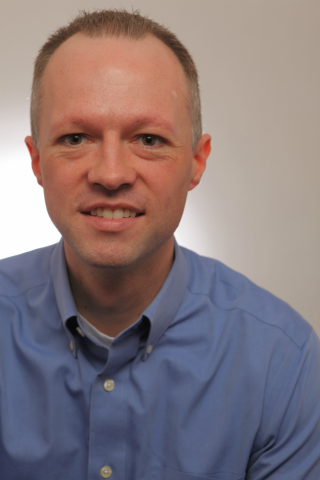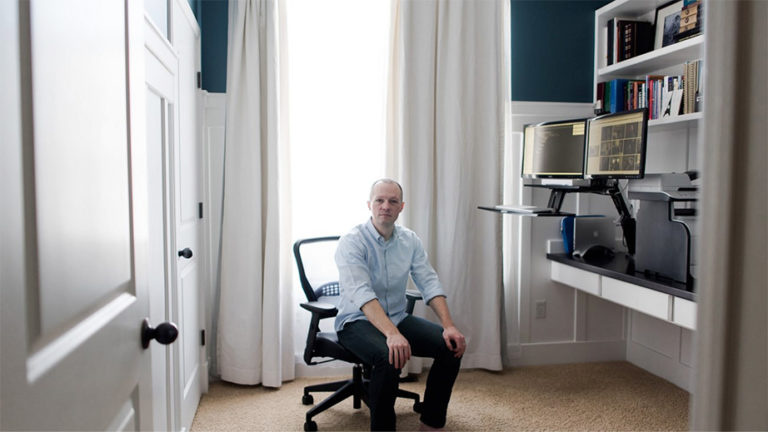Selon un rapport de Google, l’intérêt porté par les citoyens américains à l’obédience mormone du candidat Républicain Mitt Romney a atteint des sommets pendant la campagne présidentielle de 2012. Surpassant toutes les stratégies du camp démocrate, ce trait passionne les américains. Problème, le mouvement a une réputation anti-technologique et anti-progressiste, ce qui inquiète.
L’Eglise de Jésus-Christ des saints des derniers jours ( ou mormonisme ) ne l’entend pas de cette oreille. Auparavant l’affaire des théologiens, la rénovation religieuse est aujourd’hui celle de Google. En effet, les mormons ont choisi d’investir dans une campagne de publicité Google Ads pour vanter les mérites de l’ouverture d’esprit politique mormones, sa fidélité aux valeurs traditionnelles et son amour de l’esprit d’entreprise. La campagne de lobbying autour du mormonisme rénove le mouvement, notamment dans son rapport à la technologie.
D’anti-techno, les mormons se disent aujourd’hui les inventeurs du traitement de texte, des jeux-vidéos, de la télévision et dressent la liste de tous les grands tech-entrepreneurs mormons. Kip, un personnage mormon de Napoleon Dynamite, sert même de modèle, lui qui chante « I still love technology… always and forever » à son mariage, sans même évoquer le magazine Mormon Entrepreneur.
Mais certains mormons vont plus loin, et leur innovation religieuse date de bien avant ces élections : l’Association Mormone Transhumaniste rejoint certaines vue d’un mouvement technophile, le Transhumanisme, qui voit dans la technologie et la modification du corps le futur d’une existence post-humaine. Comment une religion comme le mormonisme peut-il rejoindre les vues des adeptes des cyborgs ?
Pour répondre, le Tryangle pose ses questions à Lincoln Cannon, Mormon-Transhumaniste qui défend les voies du « Transfigurisme ».
A la découverte de l’Association Mormone Transhumaniste
 Tryangle. How would you define the Mormon Transhumanist Association (MTA) ?
Tryangle. How would you define the Mormon Transhumanist Association (MTA) ?
Lincoln Cannon. The Mormon Transhumanist Association is an international nonprofit organization that provokes change toward radical flourishing in creativity and compassion through technology and religion, as outlined in the Transhumanist Declaration and the Mormon Transhumanist Affirmation. We support discussion and public awareness of emerging technologies, defend the right of individuals in free and democratic societies to adopt technologies that expand human capacities, and anticipate and propose solutions for the potential consequences of emerging technologies. Although we are neither a religious organization nor affiliated with any religious organization, we support our members in their personal religious affiliations, and encourage them to adapt Transhumanism to their unique situations.
Why did the 14 founding member of the MTA decided to create the Association, what was their goal ?
The founding members of the association were inspired by parallels and complements between Mormonism and Transhumanism, and desired to share this inspiration with others.
You are 143, who are the members of the MTA ?
As of 10 June 2012, the association consisted of 201 members, with approximately 31% living in Utah and 83% living in the United States. According to a survey in 2011, 76% of our members were also members of The Church of Jesus Christ of Latter-day Saints (the largest Mormon denomination) and 73% identified as theists. On cultural politics, 52% identified as progressive, 30% as moderate and 13% as conservative. On economic politics, 41% identified as progressive, 23% as moderate and 31% as conservative. All members of the association support the Transhumanist Declaration and the Mormon Transhumanist Affirmation.
Un syncrétisme religieux
What is Transfigurism ?
Transfigurism is religious Transhumanism, exemplified by syncretization of Mormonism and Transhumanism. The term “transfigurism” denotes an advocacy for change in form, and alludes to sacred stories such as the Transfiguration of Christ in the Christian tradition and the Day of Transfiguration in the Mormon tradition, suggesting both bodily and spiritual change.
How does the Mormon faith connect to transhumanist beliefs according to you ?
Increasingly, persons are recognizing parallels and complements between Mormon and Transhumanist views. On the one hand, Mormonism is a religious ideology of the Judeo-Christian tradition that advocates faith in God leading to salvation. On the other hand, Transhumanism is a mostly secular ideology that advocates ethical use of technology to extend human abilities. However, Mormonism and Transhumanism advocate remarkably similar views of human nature and potential: material beings organized according to law, rapidly advancing knowledge and power, imminent fundamental changes to anatomy and environment, and eventual transcendence of present limitations. Resources available through the MTA website provide details on the relation between Mormon and Transhumanist views.
Isn’t it a problem to MTA that Transhumanism greatly deals with life extension when Mormonism includes a belief in resurrection ?
Mormon scripture describes a phased approach to immortality, beginning with prolonged mortal lives and culminating in transfiguration of the living and resurrection of the dead to embodied life beyond present notions of sorrow and death. Mormon cosmology does not depend on supernaturalism, and Mormon scripture rejects immaterialism, going even so far as attributing materiality to spirit and embodiment to God. The ideas of life extension and embodied resurrection are compatible with each other, and consistent with both Mormonism and Transhumanism.
Transhumanist rarely are religious individually, and they tend to consider the human body as a machine you can plug to another machine. How do you feel about H+ and how do you think they feel about the MTA ?
The Mormon Transhumanist Association and Humanity+ are formally affiliated. We first affiliated on 6 July 2006, and we renewed our affiliation on 2 October 2010. While some Transhumanists are completely anti-religious, most seem to focus their criticisms on religious fundamentalism and welcome commonalities with religious Transhumanists. Likewise, most religious Transhumanists seem to welcome commonalities with secular Transhumanists.
What is the MTA view on the Singularity theory ?
Members of the Mormon Transhumanist Association have many different views on the Technological Singularity hypothesis. We all recognize opportunities and risks associated with technological change, and most of us acknowledge that the rate of change is accelerating. Some expect artificial intelligence will outpace enhanced intelligence, some expect the opposite, and some reject the distinction between artificial and enhanced intelligence. More importantly, we advocate engagement: doing whatever we can to influence change toward radical flourishing in creativity and compassion.
What would you dreamworld look like in about 50 years ?
I imagine and hope we’ll continue to work and play in metaphorical and literal worlds without end, of diverse kinds and degrees, discovered and created according to our varying desires. Mormon scripture situates heaven on Earth, renewed and glorified, and home to interdependent persons, evolved beyond present notions of sorrow and death, yet eternally learning of and progressing toward greater heavens. Implicit in such worlds is ongoing struggle and persistent opportunity for reconciliation of tensions and conflicts between and among minds, bodies, relations and worlds. While we may not have the anatomic or environmental capacity to experience the challenges of future persons and worlds, I imagine them to be analogous with those we now experience. Mormon Transhumanism should not be escapism or nihilism, but rather should be true to the Earth, to life, to each other and to ourselves, not as any supposed static being, but rather as actually experienced dynamic becoming.
What would a Mormon Transhumanist mass look like ?
Many Mormons visit temples to participate in rituals that position us in an evolution to godhood, exemplified by Jesus Christ. Originally, these rituals incorporated live actors in rooms painted to depict stages of progression. Today, the rituals incorporate video. Some day, the rituals may immerse participants in enhanced or virtual reality environments. As rituals increase in complexity, differences between the symbolic and the symbolized decrease, fading and blurring. Eventually, signifier and signified become indistinguishable, and the ritual creates that which it symbolized. A Mormon Transhumanist can see life in general as ritual change toward radical flourishing in creativity and compassion, progressively realizing its symbols through technology.


